 In a world where printing technology continues to evolve, laser printers have established themselves as a staple in homes and offices alike. Let’s begin by explaining what is a laser printer is and how it works. In this article, we’ll take a deep dive into the world of laser printers, exploring laser printer definition, their inner workings, their advantages, and how they compare to other types of printers. Let’s uncover the fascinating realm of laser printing on this journey of discovery.
In a world where printing technology continues to evolve, laser printers have established themselves as a staple in homes and offices alike. Let’s begin by explaining what is a laser printer is and how it works. In this article, we’ll take a deep dive into the world of laser printers, exploring laser printer definition, their inner workings, their advantages, and how they compare to other types of printers. Let’s uncover the fascinating realm of laser printing on this journey of discovery.
-
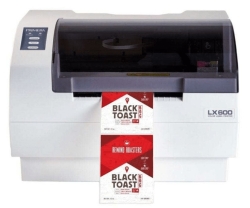 Primera LX600 Color Label Printer SKU: LX600$1,995.00
Primera LX600 Color Label Printer SKU: LX600$1,995.00
FREE SHIPPING over $199*
Orders before 12PM EST usually Ship Same Business Day - Product on sale
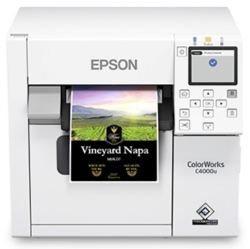 Epson C4000/CW-C4000 ColorWorks Inkjet Label Printer (Gloss) SKU: C31CK03A9991Original price was: $2,399.00.$2,199.00Current price is: $2,199.00.
Epson C4000/CW-C4000 ColorWorks Inkjet Label Printer (Gloss) SKU: C31CK03A9991Original price was: $2,399.00.$2,199.00Current price is: $2,199.00.
FREE SHIPPING over $199*
Orders before 12PM EST usually Ship Same Business Day -
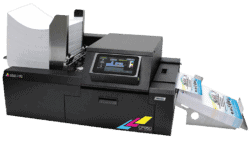 Afinia CP950 Envelope Packaging and Box Color Label Printer SKU: 35256$18,995.00
Afinia CP950 Envelope Packaging and Box Color Label Printer SKU: 35256$18,995.00
FREE SHIPPING over $199*
Orders before 12PM EST usually Ship Same Business Day
How Does a Laser Printer Work?
Before delving into the intricacies of laser printing, let’s start with the basics. Laser printers use laser technology to produce text and graphics on paper that are of the highest quality. Unlike traditional inkjet printers that use liquid ink, laser printers produce prints that are sharp and crisp.
Several key components work together to form the principle of a laser printer. The following steps are involved in the process:
1. Electrophotographic Process
Electrophotography, commonly known as xerography, is at the core of every laser printer. The basis of contemporary laser printing was established by Chester Carlson’s 1938 invention of this technique.
Getting started with the printer begins with sending an image or text from your computer. Data is converted to a printer-friendly format after being converted. This format often includes instructions for the laser to follow, dictating where and how toner should be applied to the paper.
2. Laser Scanning
Here’s where the laser comes into play. A laser beam, typically a low-power infrared laser, is used to create an electrostatic image of the desired content on a rotating photosensitive drum or a photosensitive belt inside the printer. A system of mirrors and lenses aims the laser to precisely draw the content onto the surface of the drum. The areas exposed to the laser become electrically charged.
3. Toner Application
Now that we have an electrostatic image on the drum, it’s time for the magic of toner. Toner is a fine powder that contains pigments as well as plastic fibers. By adhering to the charged areas on the drum, this toner creates a mirror image of the content to be printed.
4. Transfer to Paper
Taking the toner image and transferring it to paper is the next step. It results in an electric charge on the paper that is stronger than the charge on the drum as the paper passes over the rotating drum. This causes the toner to leap from the drum onto the paper, creating a visible image.
5. Fusing
Now that the toner is on the paper, it’s not quite ready yet. The image needs to be permanently fixed, and this is achieved through heat. Heat and pressure are used to melt toner particles into the fibers of the paper after it passes through a fuser unit. This ensures that the printed image won’t smudge or come off easily.
6. Discharge and Collection
Once the toner is fused onto the paper, any remaining electrostatic charge on the drum is discharged, and the drum is cleaned. This prepares the drum for the next printing job. Meanwhile, the printed paper is collected in the output tray, ready for you to retrieve your freshly printed documents.
The laser printer works in essentially the same way. It’s a precise and efficient process that delivers high-quality prints at remarkable speed.
-
 TrojanLabel T2-C Tabletop Volume Press Label Printer SKU: 10000155$33,995.00
TrojanLabel T2-C Tabletop Volume Press Label Printer SKU: 10000155$33,995.00
FREE SHIPPING over $199*
Orders before 12PM EST usually Ship Same Business Day -
 Quick Label QL-120Xe Inkjet Color Label Printer with 1 Year Warranty SKU: 42725300$5,995.00
Quick Label QL-120Xe Inkjet Color Label Printer with 1 Year Warranty SKU: 42725300$5,995.00
FREE SHIPPING over $199*
Orders before 12PM EST usually Ship Same Business Day -
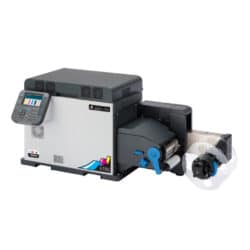 Afinia LT5C CMYK + White Label Printer SKU: 36138$12,495.00
Afinia LT5C CMYK + White Label Printer SKU: 36138$12,495.00
FREE SHIPPING over $199*
Orders before 12PM EST usually Ship Same Business Day
Printer Selection Guidelines
Now that you have a better understanding of how laser printers operate, let’s talk about some key considerations when selecting a laser printer for your specific needs. When there are so many options available on the market, it can be difficult to pick one that is right for you. Here are a few guidelines that will help you make a more informed decision:
Print Speed and Capacity
In order to determine whether a printer is fast and capable, you need to consider its speed and capacity first. Having a laser printer with a faster print speed and a larger paper tray capacity is essential if you frequently print large documents or have a high volume of printing tasks. On the other hand, if your printing needs are relatively modest, a more budget-friendly model with lower specifications may suffice.
Resolution
The resolution of your prints determines how detailed they are. Documents requiring common office tasks typically need a 600 dpi resolution (dots per inch). You are better off using a laser printer with a higher resolution, such as 1200 dpi, if you want to print high-quality graphics and images.
Printer Languages
Printer languages are important, especially if you plan to print documents from various sources and platforms. PCL (Printer Control Language) and PostScript are two common printer languages. If your operating system or applications use different languages, choose a printer that supports those languages.
Paper Handling
If you intend to use a particular type or size of paper, confirm that your printer can cope with it. Purchasing a printer that can handle different sizes of paper or media, such as envelopes or labels, would be a good choice if you frequently print on different types of paper. Additionally, some printers offer duplex printing, which can save you money on paper and reduce your environmental impact.
Warm-up Time and First Paper-Out Time (FPOT)
If you need quick access to your prints, pay attention to the warm-up time and first paper-out time (FPOT) of the printer. Some laser printers can take a while to warm up before they start printing, which may not be suitable for fast-paced work environments.
Laser Printers vs. Inkjet: Which is Better?
There are two major types of printers on the market: laser printers and inkjet printers, both with their advantages and disadvantages. In order to help you choose which technology is best for your needs, let’s compare these two technologies.
Laser Printers
-
Advantages:
- Speed: High-speed laser printers are ideal for large prints due to their high printing speeds.
- Quality: Using laser printers makes it possible to print text-heavy documents with sharp and crisp text.
- Toner Efficiency: Toner cartridges typically last longer than ink cartridges, so you can save on printing costs in the long run.
- Smudge-Resistant: Laser-printed documents are less likely to smudge or smear, which is crucial for professional presentations.
-
Disadvantages:
- Cost: Inkjet printers are generally cheaper upfront than laser printers.
- Color Printing: Laser printers are available, but they are usually more expensive than inkjet printers.
Inkjet Printers
-
Advantages:
-
- Cost: Printers with inkjet cartridges are typically less expensive upfront, which makes them attractive to consumers on a budget.
- Color Printing: The color prints produced by an inkjet printer are of excellent quality, making them an excellent choice for photos and graphics.
- Size and Portability: Inkjet printers are often smaller and more portable than laser printers.
-
Disadvantages:
- Speed: Laser printers are quicker than inkjet printers, so high-volume printing may not be possible with them.
- Ink Costs: Over time, regular cartridge replacement can increase operating costs.
- Print Longevity: Inkjet prints may fade over time, especially if not protected from moisture and UV light.
In summary, if you prioritize speed, text quality, and cost efficiency for text-heavy documents, a laser printer is likely your best choice. However, if you require high-quality color prints, have limited printing needs, or are on a tight budget, an inkjet printer may be more suitable.
-
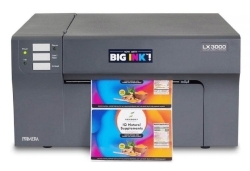 Primera LX3000 Color Label Printer with Big Ink, Pigment Ink SKU: LX3000-pigment$3,195.00
Primera LX3000 Color Label Printer with Big Ink, Pigment Ink SKU: LX3000-pigment$3,195.00
FREE SHIPPING over $199*
Orders before 12PM EST usually Ship Same Business Day - Product on sale
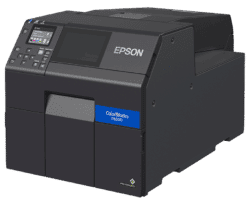 Epson ColorWorks CW-C6000A Matte Color Inkjet Label Printer with Auto Cutter SKU: C31CH76A9981Original price was: $2,899.00.$2,699.00Current price is: $2,699.00.
Epson ColorWorks CW-C6000A Matte Color Inkjet Label Printer with Auto Cutter SKU: C31CH76A9981Original price was: $2,899.00.$2,699.00Current price is: $2,699.00.
FREE SHIPPING over $199*
Orders before 12PM EST usually Ship Same Business Day -
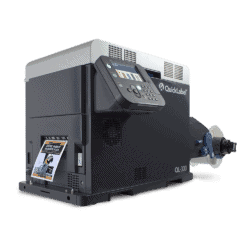 Quick Label QL-300 (120V) Toner CMYK Color Label Printer SKU: 1003-0000002$9,495.00
Quick Label QL-300 (120V) Toner CMYK Color Label Printer SKU: 1003-0000002$9,495.00
FREE SHIPPING over $199*
Orders before 12PM EST usually Ship Same Business Day
History of Laser Printers
To truly appreciate the significance of laser printers, it’s essential to delve into their history and understand how they have evolved over the years.
In the 1970s, laser printing really began to take shape after the concept was first considered in the 1960s. Laser printers were introduced for the first time in 1977 with the Xerox 9700. It was a colossal machine by today’s standards, weighing over 650 pounds and costing nearly $300,000.
On a far larger scale, the Xerox 9700 made use of the same electrophotographic method that we previously covered. Large companies and print shops were the main users of this high-volume printing device.
In the 1980s, as technology advanced and components became smaller and more affordable, laser printers started making their way into smaller offices and eventually into homes. Companies like Hewlett-Packard (HP) played a pivotal role in popularizing laser printing technology for the masses.
Throughout the 1990s and 2000s, laser printers continued to evolve, becoming faster, more compact, and more affordable. Color laser printers also became widely available, expanding their capabilities beyond monochrome printing.
Laser printers are available in a variety of sizes and shapes, allowing users to cater to a wide range of printing needs. Whether you’re a student printing assignments, a business professional producing reports, or a photographer creating marketing materials, there’s likely a laser printer tailored to your requirements.
FAQ
What Are the Benefits of a Laser Printer?
Laser printers have a number of notable advantages, including the following:
- Speed: High-volume printers are excellent at printing quickly thanks to laser printers’ fast speeds.
- Text Quality: Laser printers produce sharp and precise text, ensuring professional-looking documents.
- Toner Efficiency: Toner cartridges have a longer lifespan than ink cartridges, reducing the frequency of replacements and long-term printing costs.
- Smudge Resistance: Laser-printed documents are less susceptible to smudging, making them suitable for important documents and presentations.
- Versatility: The laser printer can print on various types and sizes of paper, including envelopes and labels, making it versatile for printing purposes.
Do Laser Printers Have Any Drawbacks?
While laser printers offer numerous advantages, they also have some drawbacks:
- Initial Cost: Inkjet printers are generally cheaper upfront than laser printers.
- Color Printing: Laser printers can print in color, but they are generally more expensive than inkjet printers and are less cost-effective for color printing.
- Size: Laser printers are larger and heavier than inkjet printers, making them unable to fit into small spaces and not very portable.
Important Laser Printer Features
When considering a laser printer, look for the following important features:
- Print Speed: Choose a printer with a speed that matches your printing needs, whether it’s for occasional home use or high-volume office tasks.
- Resolution: Higher resolution ensures better print quality, so consider your specific printing requirements.
- Paper Handling: Check for the types and sizes of paper the printer can accommodate, as well as duplex printing capabilities.
- Connectivity Options: Before buying a printer, ensure that it has the relevant connectivity options, such as USB, Wi-Fi, and Ethernet.
- Printer Language Support: Make sure that your operating system and software application support the language of the printer.
Are Laser Printers Good For Home Use?
In the case of large amounts of printing from home, laser printers are the best option. If you often print text-heavy documents, such as school assignments, reports, or business-related paperwork, a monochrome laser printer offers fast and efficient printing with sharp text quality.
For home users with occasional color printing requirements, color laser printers are also available, though they tend to be pricier than inkjet alternatives. Additionally, consider factors like size, noise level, and connectivity options to ensure the printer fits seamlessly into your home environment.
Where Can I Get a Laser Printer?
If you’re looking to acquire a laser printer, TCS Digital Solutions is an excellent option. They specialize in offering laser label printers, which can be a valuable asset for businesses and individuals requiring high-quality label printing. TCS Digital Solutions is a reputable provider known for its range of printing solutions, ensuring you have access to reliable and efficient laser printers to meet your specific needs. Whether it’s for office use, labeling products, or other purposes, TCS Digital Solutions can be your go-to source for acquiring a laser printer that suits your requirements.
Conclusion
Get the conclusion of what a laser printer is. A laser printer offers speed, precision, and versatility, which have been appealing to a wide range of users since their inception. Understanding how they work and their key features empowers you to make an informed choice when selecting a laser printer that best suits your needs. Whether you’re looking for a reliable workhorse for your office or a sleek and efficient printer for your home, laser printers have much to offer in the realm of modern printing technology. If you want to get information about what laser printing is or want to buy a laser printer, then contact TCS Digital Solutions



